Calculation of geocentric and heliocentric planetary positions, planetary aspects,
world and personal planetary transits, and synastry
Planetary Aspects and Transits Software Shop
The software described on this website runs on Windows desktops and laptops (including Win11) and also on Macs with an emulator. For each program below, clicking on the title takes you to a page with the user manual.
The author of this software and website welcomes comments, which may be sent to support@planetary-aspects.com
Planetary Aspects and Transits 26.1Click on the title for the full description. |
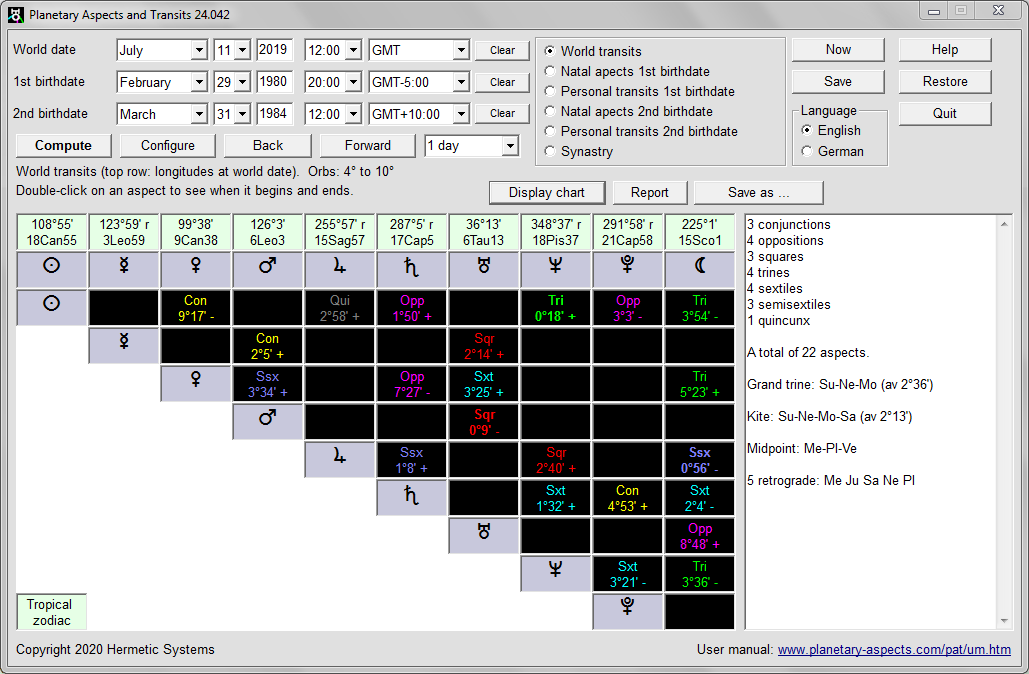 |
|
This is a program to calculate geocentric aspects between planets at a given date. Also displays personal transits for a given birthdate, and synastry for two birthdates. It identifies aspect patterns (such as grand trines and yods) and supports searching for occurrences of them. It has graphical and dynamical displays (as well as tabular) which show how transits change over time, and how the position of a transiting planet changes. It supports both tropical and sidereal zodiacs. Read more ... |
|
Heliocentric Planetary Aspects and Transits 30.0Click on the title for the full description. |
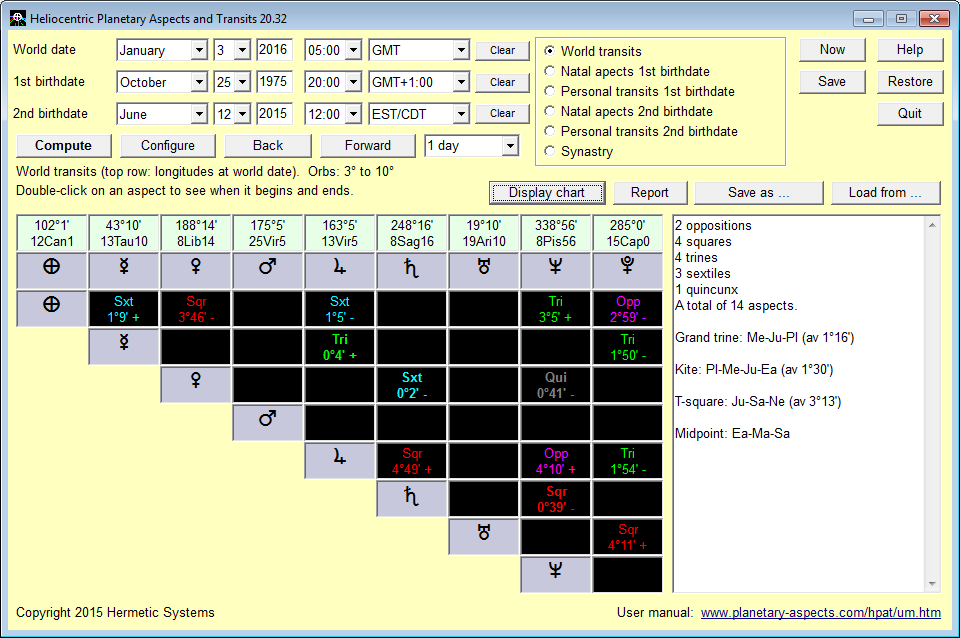 |
|
This is a heliocentric version of Planetary Aspects and Transits, and does everything that that program does (except, of course, that the Moon is not included). In addition, when searching for the occurrence of a particular aspect pattern you can ask it to search for an aspect pattern involving up to three specified planets (e.g. a grand trine involving Earth and Pluto). Read more ... |
|
Your Planetary Transits 10.0Click on the title for the full description. |
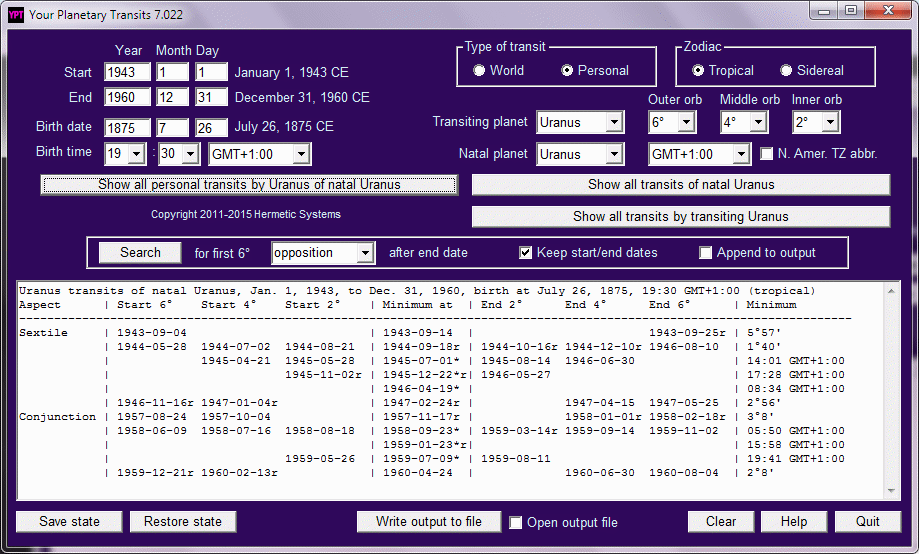 |
|
YPT calculates the exact dates and times at which geocentric transits between two selected planets begin and end (relative to chosen orb values). It produces transit tables for both world (a.k.a. mundane) transits and personal transits. It supports both tropical and sidereal zodiacs. Read more ... |
|
Transits for Astro‑Trading 12.0Click on the title for the full description. |
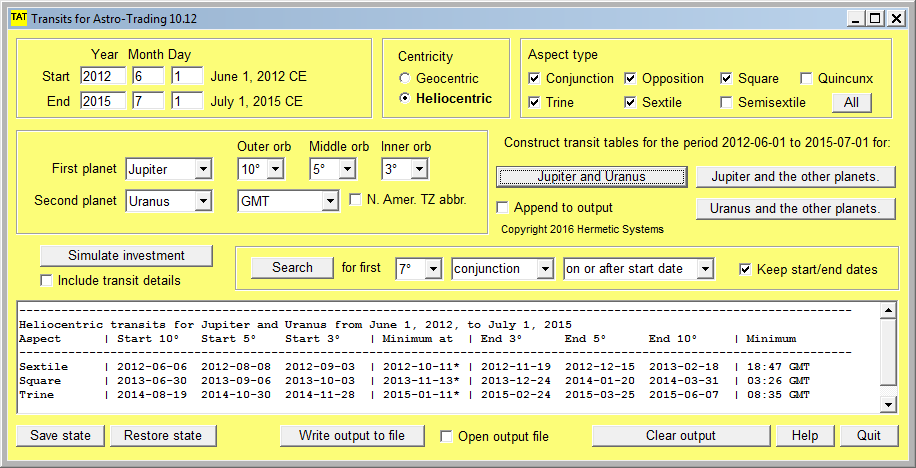 |
|
TAT produces transit tables showing the exact dates and times at which geocentric and heliocentric transits between two selected planets begin and end (relative to chosen orb values). Also allows searching for a given aspect between two planets. Read more ... |
|
Planets Stars Exact Aspects 16.0Click on the title for the full description. |
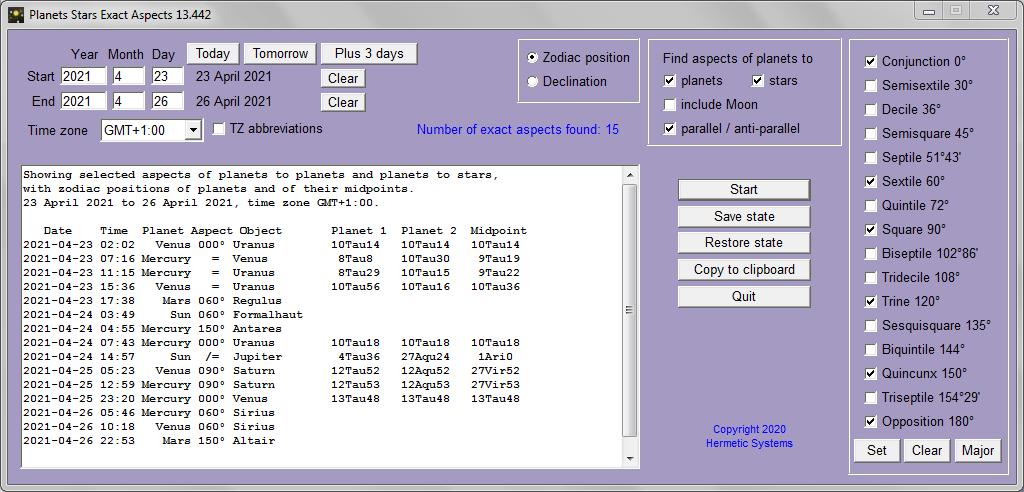 |
|
Unlike the programs above, PSEA is not concerned with planetary transits, rather it displays, for a date or a range of dates, the times of exact geocentric aspects between planets, stars and the Moon. It also calculates declinations at those times. Read more ... |
|





